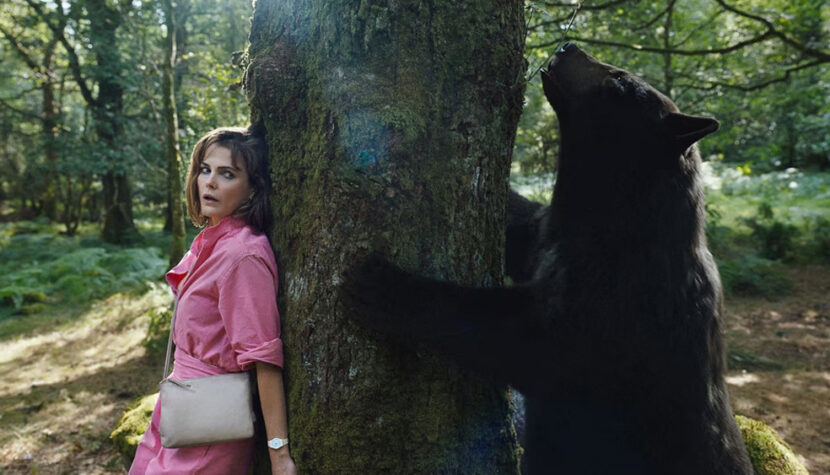COCAINE BEAR. The fatal effects of drug use

In December 1985, a black bear was found dead in northern Georgia, having died as a result of ingesting cocaine thrown from a plane by a smuggler wanting to get rid of unnecessary ballast. This event inspired Jimmy Warden’s screenplay for the comedy horror film suggestively titled Cocaine Bear. Directed by Elizabeth Banks, the film starts with an ejtis anecdote and turns it into a monster movie pastiche, which according to the director is a kind of “revenge story” of a teddy bear poisoned by drugs.
Cocaine Bear begins with the opening intro, in which the drug dealer throws a load of cocaine out of the plane, and then, instead of parachuting after him, he hits his head and falls unconscious. This slapstick moment bluntly shows the viewers what we’re dealing with – Banks’ film will not play with subtleties, reaching for the simplest means to cause suspense and laughter. Then we see how the title bear also consumes the title cocaine and turns into a hyperactive, aggressive beast massacring tourists who do not expect a bloody end to their vacation. After such setting, you can proceed to the main story about the confrontation of man with the merciless representative of nature.
The driving force of Cocaine Bear are classically arranged scenes of bear attacks punctuated with grotesque humour. Admittedly, the narrative is built around several intersecting threads – a detective following the trail of a found corpse of a drug dealer, smugglers wanting to recover the cargo (one of Ray Liotta’s last appearances), truants lost in the forest and their mother and a guard looking for them – but in fact they are just a pretext for subsequent sequences-sketches, in which the main joke about the drugged bear returns. Surprisingly, in the vast majority of these subsequent scenes are arranged so efficiently that, despite the repetitive formula, Cocaine Bear is actually funny, and further appearances of the title “monster” can be expected to see what staging trick will be used this time.

The pastiche impetus is enough for less than 90 minutes of the film, but the makeshift dramaturgy can be disappointing at some moments. The pretextual nature of the plot is particularly noticeable in the final acts of the film, which try to lead the plots of the bear and people to a more moralistic conclusion. Completely unnecessary, because in the story of an animal flying around the forest in a drug frenzy and the representatives of an advanced civilization terrorized by it, no additional subtext or message is needed. Banks and Warden want to move towards a perverse metaphor of nature “returning” the devastating blows delivered to it by humanity, but they succeed rather crudely. One may wonder whether the cocaine bear alone as the axis of the narrative is not enough for this purpose, and therefore whether more explicit additions are needed at all. They only spoil the basic concept, highlighting the shallows of the script, which is otherwise successfully masked by pastiche dynamics.
However, even if Cocaine Bear suffers from the inequalities of the script, it is compensated by the arrangement of the action and the film as a whole is rather enjoyable. The animations of the bear itself also deserve a mention, as they give realism to its scenes, thanks to which we do not have the impression that we are watching a cheap parody, but a really well-prepared film rip. Contrary to what you might have feared – that Banks’ movie would be a viral bait, closer to C-class productions known from the late-night TV schedule than to serious cinema – Cocaine Bear is decent entertainment, perfect for looser screenings with friends.

